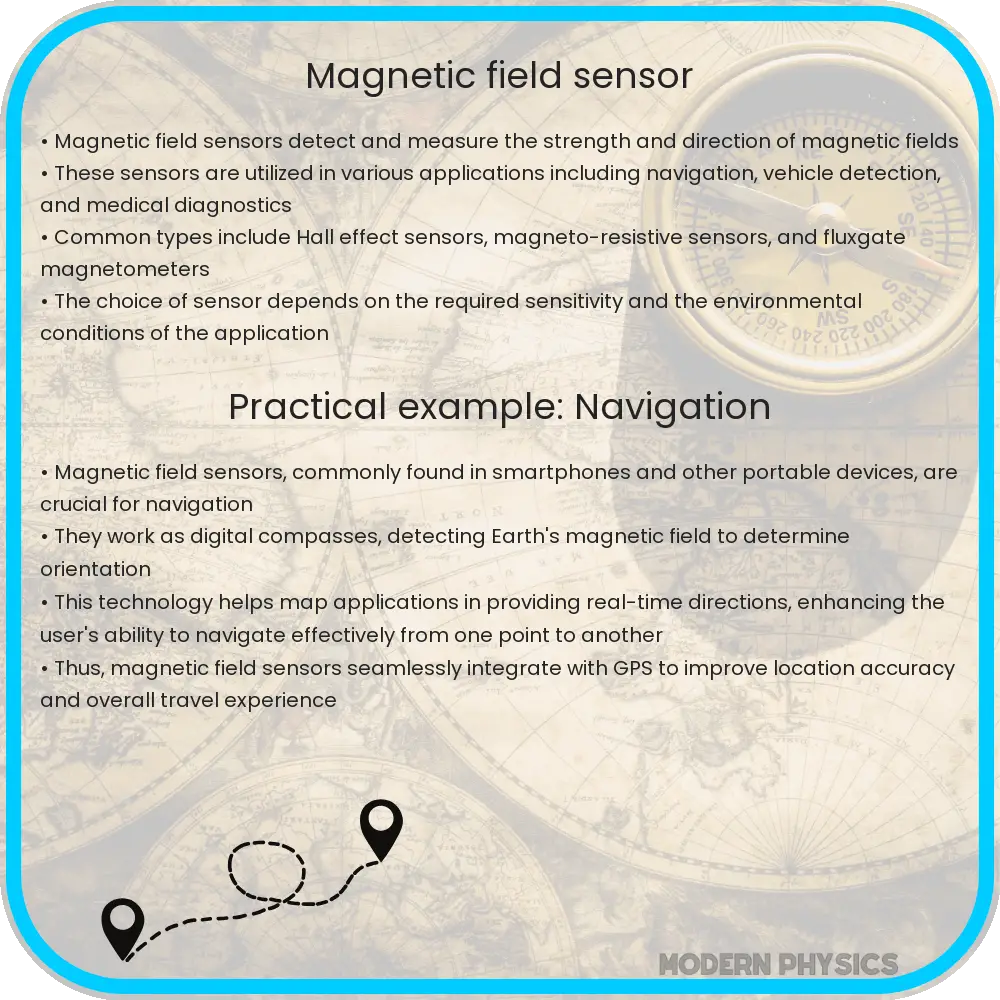Explore the world of magnetic field sensors, focusing on their precision, stability, and sensitivity in various applications and technologies.

Understanding Magnetic Field Sensors: A Guide to Precision, Stability, and Sensitivity
Magnetic field sensors are critical components in a variety of applications, from navigation systems to medical devices. Their primary function is to detect and measure magnetic fields, often with high precision and sensitivity. This article delves into the core aspects of these sensors, focusing on their precision, stability, and sensitivity, which are crucial for their performance and reliability in different applications.
The Fundamentals of Magnetic Field Sensors
Magnetic field sensors operate on the principle of detecting changes in magnetic fields. They can be categorized based on the detection technique used, such as Hall-effect sensors, magnetoresistive sensors, and fluxgate sensors. Each type has distinct characteristics that determine its suitability for specific applications.
Hall-Effect Sensors: Precision in Detection
Hall-effect sensors are perhaps the most commonly used type. They operate based on the Hall effect, which occurs when a current-carrying conductor is placed in a magnetic field, leading to the generation of a voltage perpendicular to both the current and the field. This voltage is proportional to the magnetic field strength, allowing for precise measurement. Hall-effect sensors are known for their accuracy and are widely used in automotive and industrial applications.
Magnetoresistive Sensors: Sensitivity and Miniaturization
Magnetoresistive (MR) sensors, on the other hand, change their electrical resistance in response to a magnetic field. This type includes anisotropic magnetoresistive (AMR), giant magnetoresistive (GMR), and tunnel magnetoresistive (TMR) sensors. MR sensors are highly sensitive and can detect very low levels of magnetic fields. They are ideal for applications where space is limited, as they can be made extremely small.
Fluxgate Sensors: Stability and Low-Field Detection
Fluxgate sensors are renowned for their stability and ability to detect low magnetic fields. They consist of a ferromagnetic core and two coils of wire. When an alternating current is passed through one coil, the core becomes magnetically saturated. The second coil detects changes in the magnetic field, which are then processed to measure the external field’s strength and direction. Fluxgate sensors are extensively used in geophysical applications and for detecting Earth’s magnetic field.
Enhancing Performance with Advanced Materials and Technologies
The evolution of magnetic field sensors is closely tied to advancements in materials and technology. Modern sensors often incorporate materials like ferromagnetic compounds and rare earth elements, enhancing their sensitivity and stability. For instance, using materials like Permalloy (Ni80Fe20) in MR sensors improves their responsiveness to magnetic fields. Additionally, the integration of nanotechnology has led to the development of nano-sized sensors, opening new avenues for applications in biomedicine and microelectronics.
Application-Specific Design Considerations
Designing a magnetic field sensor requires a careful consideration of its intended application. For example, sensors used in automotive applications must withstand extreme temperatures and vibrations, while those in medical devices need to be highly sensitive and precise. The choice of sensor type, materials, and design specifications are critical to ensure optimal performance under specific operating conditions.
Challenges and Future Directions
Despite their advancements, magnetic field sensors face challenges such as electromagnetic interference (EMI) and temperature fluctuations, which can affect their accuracy. Addressing these issues involves improving sensor design and employing advanced signal processing techniques. Looking ahead, the future of magnetic field sensors is likely to see further miniaturization, increased integration with electronic systems, and the development of sensors capable of detecting even weaker magnetic fields with higher precision.
Conclusion
Magnetic field sensors are indispensable tools in modern technology, with their applications spanning numerous fields. The pursuit of precision, stability, and sensitivity in these sensors has led to significant advancements, from the development of innovative materials to the incorporation of cutting-edge technologies. As the demand for more accurate and reliable sensors grows, continuous research and development in this field are essential. Magnetic field sensors will undoubtedly play a pivotal role in shaping future technological advancements, offering enhanced capabilities in various applications ranging from navigation and industrial automation to healthcare and environmental monitoring. Embracing these innovations will be key to unlocking new possibilities and overcoming the challenges of an increasingly complex and interconnected world.
